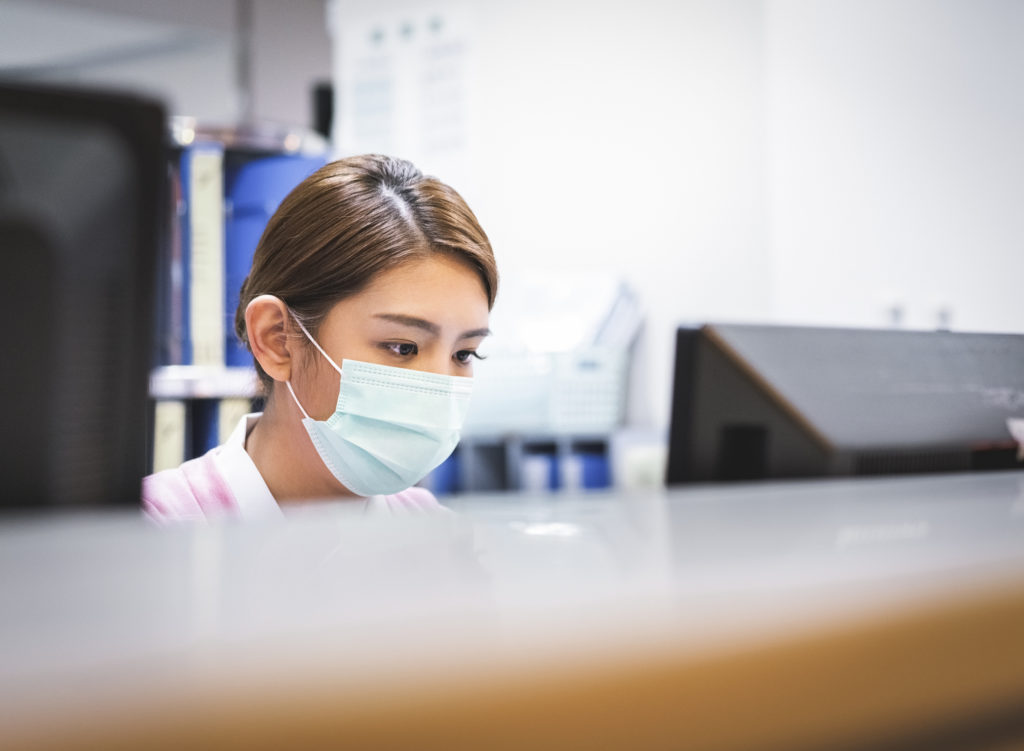Researchers report that after the first 6 weeks of SARS-CoV-2 outbreak, no hospital-acquired infections occurred among health care workers at public hospitals in Hong Kong— although these hospitals dealt with 42 confirmed COVID-19 cases.

Dr. Vincent C.C. Cheng, Hong Kong’s Queen Mary Hospital Department of Microbiology, is the lead author of the new study.
Dr. Cheng and the team inventoried the infection control measures implemented by the Hong Kong Hospital Authority,’ the governing body of all 43 public hospitals responsible for 90% of hospitalization in Hong Kong’ immediately following the COVID-19 outbreak in Wuhan, Mainland China.
The findings indicate that if applied conscientiously, standard practices for the control of infections are effective.
The scientists have studied the epidemiology of confirmed cases dealt with by these clinics, as well as gathering and analyzing samples from the soil and air to see how much the virus has spread in the community.
The researchers have published their findings in the journal The Society for Healthcare Epidemiology of America, Infection Control & Hospital Epidemiology.
None of the 413 staff members infected
Dr. Cheng and colleagues started their estimates with “Day 1″— December 31, 2019, the day a cluster of cases of pneumonia were confirmed in Wuhan, China.
The study’s aim was to test COVID-19 preparedness within 42 days, or 6 weeks.
During this period, 1,275 suspected COVID-19 cases were investigated by the 43 hospitals included in the study and registered 42 confirmed cases— that is, 3.3 percent of the suspected cases.
The confirmed cases were handled by a total of 413 healthcare workers. Eleven of these workers were exposed to SARS-CoV-2 untreated, and were therefore quarantined for 14 days.
None of the quarantined staff members contracted the virus, report the researchers. Furthermore, no hospital acquired infections occurred after 6 weeks.
Environmental transmission less important
To further investigate the virus ‘ transmission to the atmosphere, Dr. Cheng and the team took eight air samples from a COVID-19 patient’s chin at a distance of 10 centimeters (cm).
The patient presented with moderate viral load. The scientists collected the samples while the patient followed instructions with and without a surgical mask to breathe naturally, breathe heavily, speak and cough.
The researchers also carried out an environmental analysis of one patient with moderate viral load — that is, 13 surfaces were tested around the patient.
None of the eight SARS-CoV-2 air samples tested positive. Only one of the 13 environmental samples measured the virus positively, comprising 7.7 percent of the analyzed surfaces.
Dr. Gonzalo Bearman, a medicine professor and Chair of the Infectious Diseases Division at Virginia Commonwealth University in Richmond, reviewed the report but was not involved in the research.
“The descriptive study employed unique environmental and air samples, with the results suggesting that environmental transmission may play less of a role than person-to-person transmission in disease propagation.”
– Dr. Gonzalo Bearman
Infection control measures work
The Hong Kong hospitals implemented infection control measures that included extending screening criteria to include visits to hospitals in mainland China and immediately isolating people with SARS-CoV-2 in isolation rooms for airborne infections.
The patients were sometimes segregated in a hospital, where they were positioned 1 meter apart from each other.
The number of COVID-19 cases in which SARS-CoV-2 was contracted locally, in Hong Kong, increased significantly during the first 42 days of the outbreak.
Specifically, the number of locally transmitted infections increased between day 33 and day 42 from 1 of 13 confirmed cases (or 7.7 per cent) on day 32 to 27 of 29 confirmed cases (or 93.1 per cent).
Twenty-eight of these cases were tied to 8 family groups, and eleven were tied to a single family group.
These 11 cases were “most likely transmitted during the[ family’s] hot pot meeting, where[ the] use of salivary contaminated utensils and chopsticks may occur,” the authors note.
As regards hospital transmission and healthcare workers protection, standard infection control procedures are effective, the study concludes.
“Appropriate steps to manage infection in hospitals will prevent coronavirus transmission that is associated with health care,” Dr. Cheng and colleagues write. Concluding:
“Vigilance in hand hygiene practice, wearing of surgical masks in the hospital, and appropriate use of personal protective equipment in patient care, especially when performing aerosol-generating procedures, are the key infection control measures to prevent hospital transmission of the virus.”
For information on how to prevent the spread of coronavirus, this Centers for Disease Control and Prevention (CDC) page provides advice.







